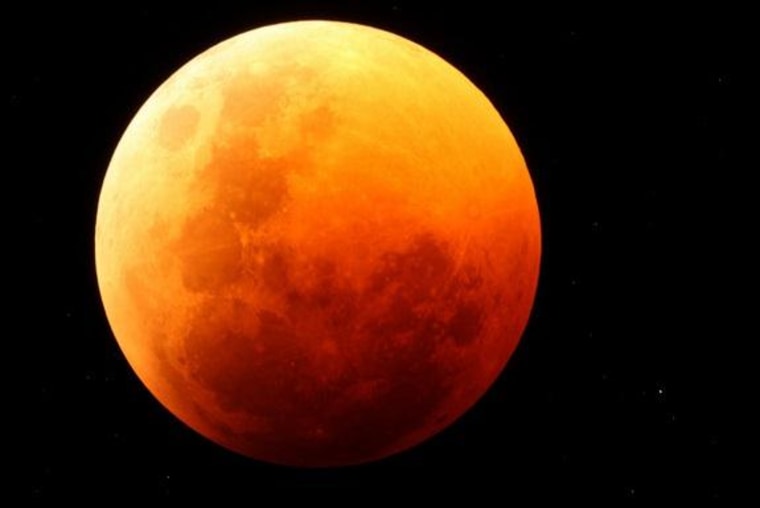From eclipses and planets to meteor showers galore, the northern spring season of 2014 will bring a number of eye-catching celestial sights for stargazers on Earth.
Weather permitting, some of the best spring night sky events could be readily visible without the aid of binoculars or a telescope, even from brightly-lit cities. But you'll need to know when and where to look to make the most of the season.

So whether you want to impress a youngster, or you're simply hoping to witness a head-turning astronomical event for yourself, it always helps to be ready in advance by marking your calendar and highlighting a number of these special dates:
April 14 and15: Mars' closest approach in 2014 and a total eclipse of the moon!
During the overnight hours of April 14 and 15, it will be a night for viewing first Mars and later the full moon. [Mars at Its best in April Night Sky (Video)]
First, Mars will come to within 57.4 million miles (92.4 million kilometers) of our planet, making its closest approach to us since Jan. 3, 2008. All through the night, Mars will resemble a dazzling star shining with a steady fiery-colored tint making it a formidable sight; its brightness will match Sirius, the brightest of all the stars.
As a bonus, later that very same night (actually during the early hours of April 15) North America will have a ringside seat to see a total lunar eclipse when the Full Moon becomes transformed into a mottled reddish ball for 78 minutes as it becomes completely immersed in the shadow of the Earth.
April 22: The Lyrid meteor shower
Rather favorable circumstances are expected for this year’s Lyrid meteor shower, predicted to be at maximum this morning. The radiant, located near the brilliant bluish-white star Vega, rises in the northeast about the time evening twilight ends, and viewing will improve until light from the last-quarter moon begins to interfere just after 2 a.m. your local time.
April 28 and 29: A Ring Eclipse that nobody will see?
It is quite possible that only penguins will witness the annular solar eclipse, also known as a "ring of fire" solar eclipse. That's because it will occur within the uninhabited region of Wilkes Land in Antarctica.
May 6: The Eta Aquarid meteor shower
The annual Eta Aquarid meteor shower — "shooting stars" spawned by the famed Halley's Comet — is scheduled to reach maximum early this morning. It's usually the year's richest meteor display for Southern Hemisphere observers, but north of the equator the Eta Aquarid shower is one of the more difficult annual displays to observe.
May 10: Saturn at opposition
The ringed planet Saturn reaches opposition; it rises in the east-southeast at dusk, is due south in the middle of the night and sets in the west-southwest at dawn. Once it gains enough altitude, it appears similarly as bright as the zero-magnitude stars Arcturus and Vega.
May 24: Possible outburst of bright meteors
Perhaps the most dramatic sky event in 2014 could come at the start of the Memorial Day weekend. In the predawn hours of Saturday, May 24, our planet is expected to sweep through a great number of dusty trails left behind in space by the small comet P/209 LINEAR.
May 25: Mercury attains its greatest elongation
The planet Mercury will reach its greatest elongation, or greatest angular distance, east of the sun on this night. This is Mercury's best evening apparition of the year; it sets about 100 minutes after sunset. An hour after sunset, look low above the west-northwest horizon; the speedy planet should be easily visible as a yellowish "star."
— Joe Rao, Space.com
Follow Space.com on Twitter, Facebook or Google+. This is a condensed version of a report from LiveScience. Read the full report.
- 10 Most Popular Skywatching Misconceptions Explained
- The Night Sky in 2014: 11 Must-See Celestial Events (Infographic)
- Best Telescopes for Beginners | Reviews and Comparisons
Copyright 2014 SPACE.com, a TechMediaNetwork company. All rights reserved. This material may not be published, broadcast, rewritten or redistributed.